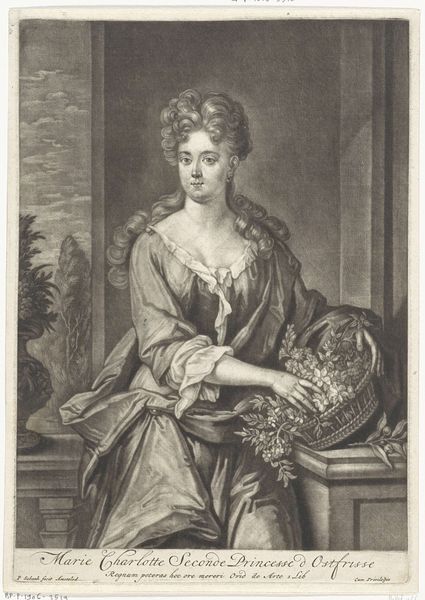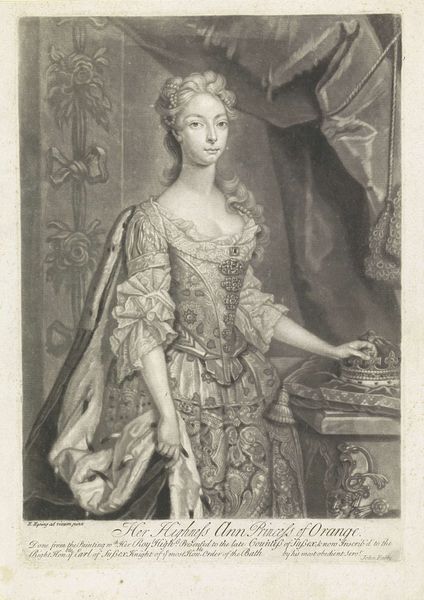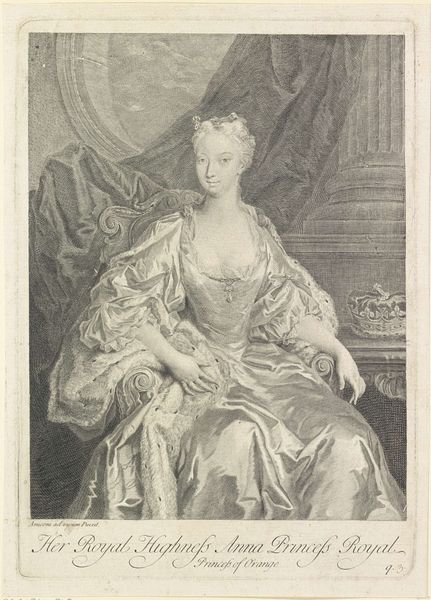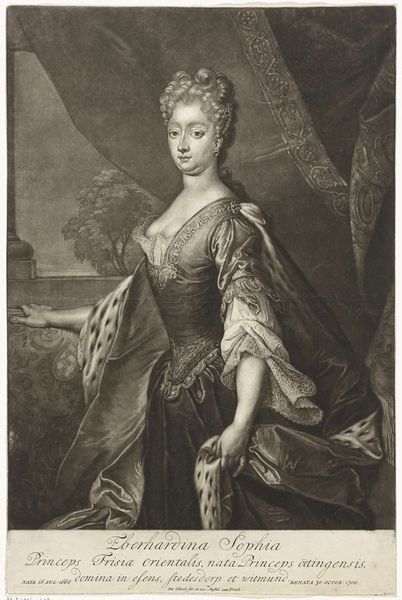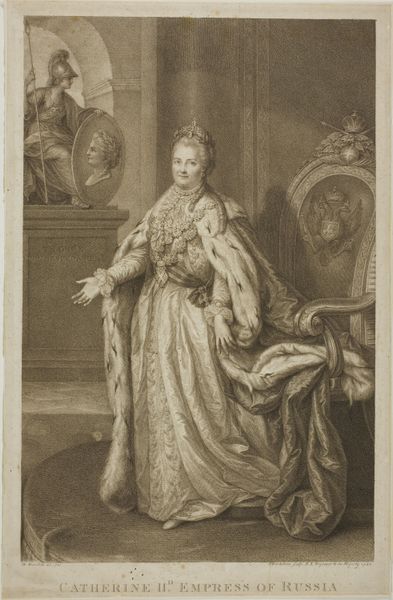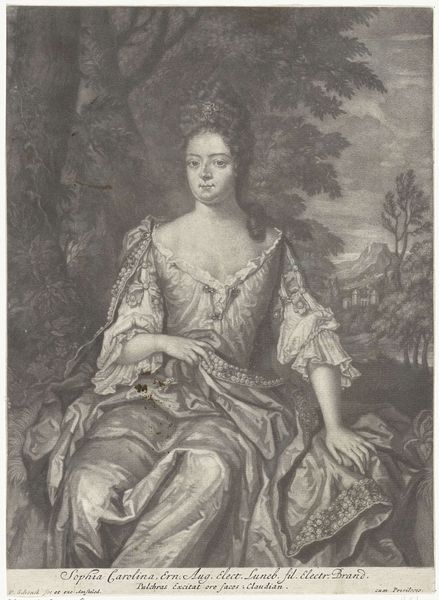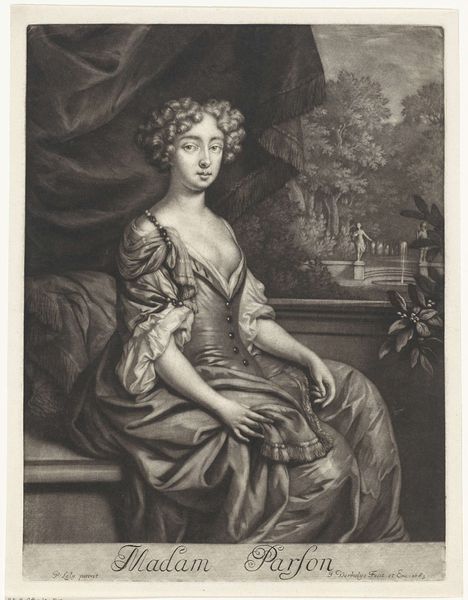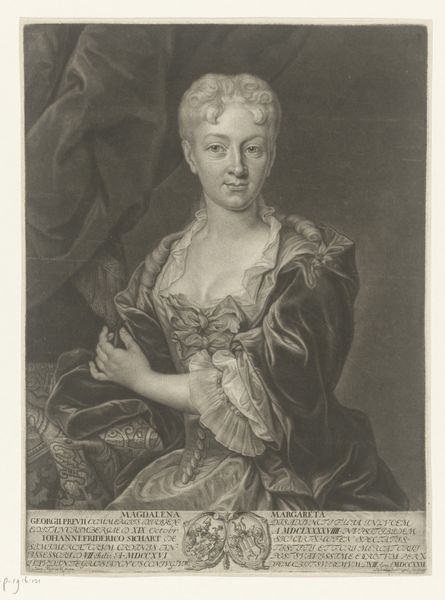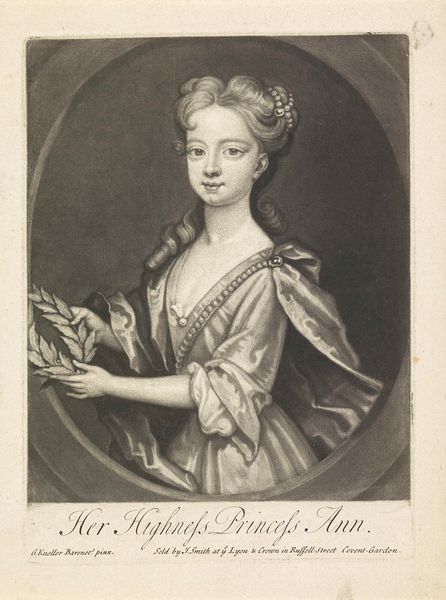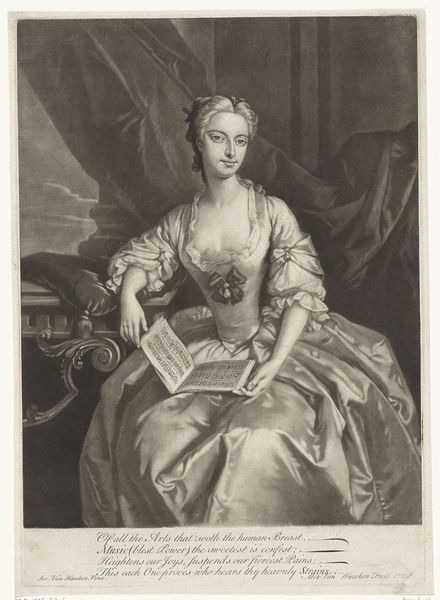
print, metal, paper, engraving
#
portrait
#
baroque
# print
#
metal
#
charcoal drawing
#
paper
#
northern-renaissance
#
engraving
Dimensions: height 247 mm, width 181 mm
Copyright: Rijks Museum: Open Domain
Editor: Here we have Pieter Schenk's "Portret van Maria de Wilde," created between 1702 and 1713. It’s an engraving on paper. I'm struck by how serene and posed she appears; almost untouchable. How do you interpret this work? Curator: It's essential to consider this portrait within the context of its time. Baroque portraiture often functioned as a tool for constructing and reinforcing social hierarchies. Who was Maria de Wilde, and what does her portrayal tell us about the values of that society? Look at the details - the fabric, the setting. Are they communicating something about her status, or perhaps about the aspirations of women at the time? Editor: So you’re suggesting her composure and luxurious clothing aren't just aesthetic choices, but declarations of social standing? Curator: Exactly. And consider the male gaze inherent in such portraits. How much agency did Maria de Wilde have in her representation? Whose vision is truly being presented here? It might also be insightful to look into Maria's family and social networks, how were women positioned in scientific, intellectual and artistic circles in that era? Perhaps this portrait suggests more than simple nobility and also shows the dawn of women’s growing importance? Editor: That’s a really interesting point, I didn’t think about her family’s influence, or how women at the time could express their ambitions through the conventions of portraiture. Curator: It also opens a dialogue on the limited range of expressions available to women in visual art through the centuries. We might examine the restrictions placed on them. This in turn, allows a comparison of their visibility to male contemporaries. What does it say that we are here trying to discover more about her identity three centuries later, guided by a few visual clues. Editor: That really changes how I see the portrait. Instead of just a pretty picture, it's a record of social power, but also a signpost for what's been excluded from history. Curator: Precisely. By questioning those silent elements we create dialogues about inequality and biased perspectives from our present, transforming how we learn about past power dynamics and silenced contributions.
Comments
No comments
Be the first to comment and join the conversation on the ultimate creative platform.

